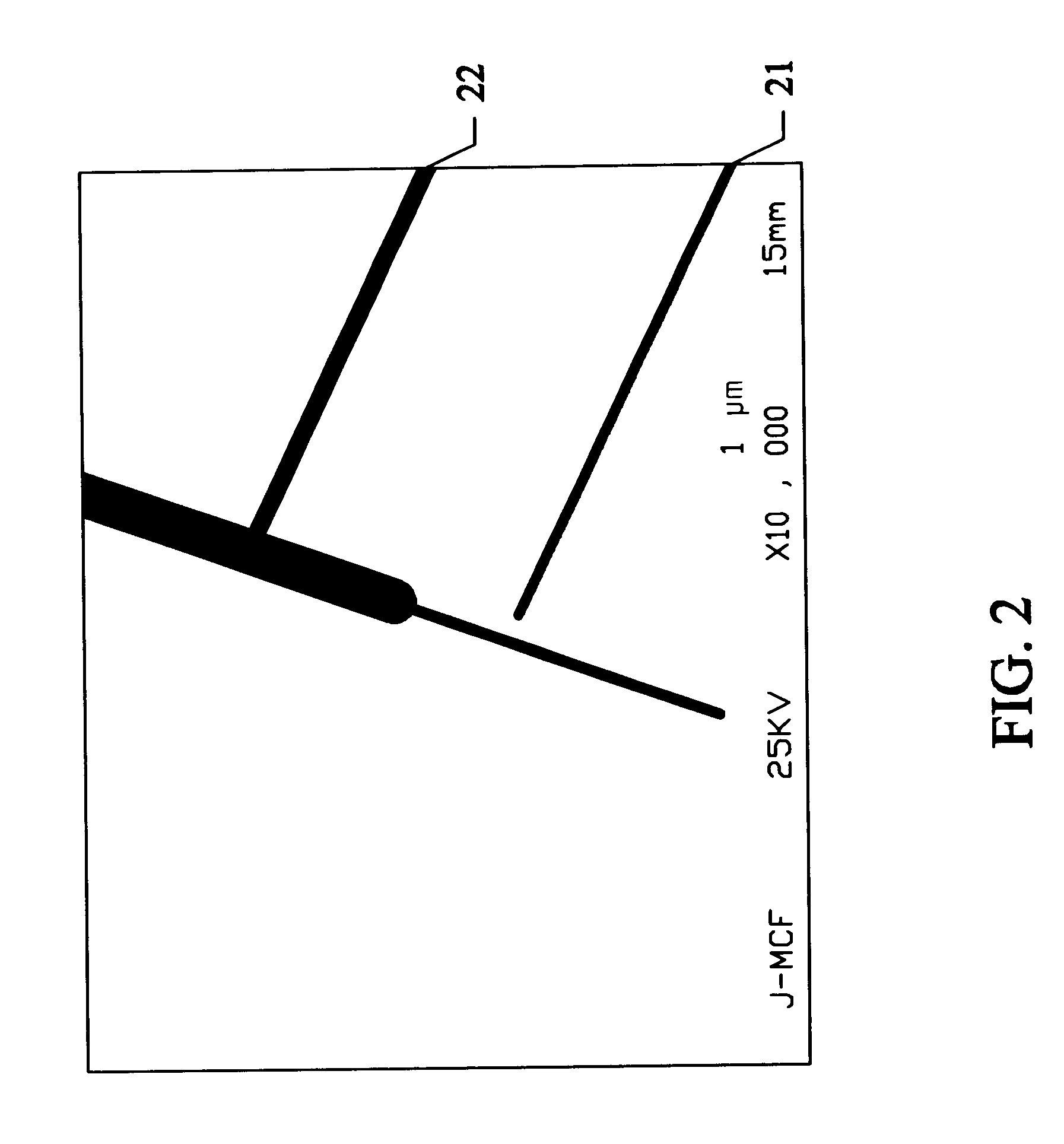Carbon nanotube with a graphitic outer layer: process and application
a carbon nanotube and graphitic outer layer technology, applied in the field of process and application, can solve the problems of low yield of prior art carbon nanotube production methods, silicon nitride pyramid-tip scanning probe microscope cannot meet the requirements of the semiconductor industry,
- Summary
- Abstract
- Description
- Claims
- Application Information
AI Technical Summary
Benefits of technology
Problems solved by technology
Method used
Image
Examples
Embodiment Construction
milligrams (mg) of FeNi nanoparticles, comprising a 1:1 ratio of Fe and Ni, are deposited on a silicon substrate having a surface area of approximately 300 cm.sup.2 in 50-100 Torr argon atmosphere. The FeNi transition metal catalyst on silicon substrate is removed from the evaporator and placed in a thermal catalytic vapor deposition (CVD) system consisting of a quartz tube inserted into a furnace.
The reactor vessel is heated to approximately 725.degree. C. with a flow of 50% argon and 50% hydrogen for 30 to 60 minutes. This purges the vessel of undesirable impurities and reduces oxides. Next, a gas flow comprising 10% methane (CH.sub.4) and 90% argon (Ar), is introduced to the reactor at a temperature between approximately 725.degree. C. and 900.degree. C. for a period of thirty minutes to forty-five minutes for nanotube growth. Then the gaseous mixture being fed to the reactor vessel is changed to 5% methane, 5% hydrogen (H.sub.2) and 90% argon while the reactor is heated to tempe...
PUM
| Property | Measurement | Unit |
|---|---|---|
| Temperature | aaaaa | aaaaa |
| Temperature | aaaaa | aaaaa |
| Fraction | aaaaa | aaaaa |
Abstract
Description
Claims
Application Information
 Login to View More
Login to View More - R&D
- Intellectual Property
- Life Sciences
- Materials
- Tech Scout
- Unparalleled Data Quality
- Higher Quality Content
- 60% Fewer Hallucinations
Browse by: Latest US Patents, China's latest patents, Technical Efficacy Thesaurus, Application Domain, Technology Topic, Popular Technical Reports.
© 2025 PatSnap. All rights reserved.Legal|Privacy policy|Modern Slavery Act Transparency Statement|Sitemap|About US| Contact US: help@patsnap.com



